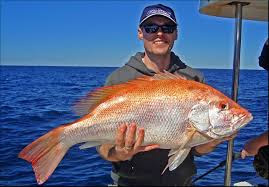Fly Fishing Methods Panfish on Poppers Bugs
The majority of fly fishing method is done for trout, but don't overlook the fun of fishing for panfish. When you cannot get to a trout stream, or you just want to fill a stringer with fish to take home to eat, there is nothing better than a bluegill or crappie on a best fly rod and reel. There is not much to it if you just know a couple of basic tips.
Fly Fishing Methods Panfish on Poppers Bugs
I have found that there are a number of fun ways to fish for panfish with poppers. Before I begin discussing the actual poppers, let me talk about the how, where, and when parts of the equation. I have found that fishing poppers before the fish begin to spawn is pretty slow. This is typically when my popper fishing begins. In fact, often the panfishing hits its peak during this time, but is well worthwhile through the warm months of the Summer. Time of day is also critical. As probably seems commonsense, panfish do the majority of their surface feeding in the low light hours of the morning and the evening.
If I am fly fishing during the mid-day hours, I will typically switch over to a small streamer fly usually a woolly bugger in black, brown, or olive. I have fond that the fishing is always best around cover, just as if you were fishing for bass. Casting to the edge of a weedbed is a good bet. I have found that wade fishing or fishing from the bank or a dock is fine as long as you can access the aforementioned locations. Otherwise, I use a jon boat, canoe, or a kayak. A float tube would also be a great option (I do not own one). Typically, I use a 5 weight rod with weight forward floating line and 4X tapered leader.
The reason I use 4X leader is because it is the rare trip when I do not hook up with a bass or two. In fact I have landed some in the 5 lb category and in my opinion when fly fishing method for panfish, the angler should be ready for bass also. If you really want to go light, use a 3 weight rod and 6X leader. The only time where this will be problematic is when trying to cast a larger fly or when there is much of a breeze. For these scenarios, the backbone of a 5 weight may be required.
Fly selection really is pretty simple when it comes to poppers. They must be small. If you want to catch panfish (as opposed to just targeting bass), the flies must be small enough for the small mouth of a panfish. When popping for panfish, the take will be rapid and if the fish cannot easily get its mouth around the fly, you will see lots of rises and have very few hookups. The ideal popping bug for a fly rod will be brightly colored and have the legs of a terrestrial bug. I do also carry some dark colored poppers as for some seemingly inexplicable reason occasionally these seem to be what they want.
Make your cast as close to cover as skill and conditions allow. The typical approach I use is to allow the surface rings to completely dissipate before twitching the bug one time. Usually, if I will catch a fish on a cast it will be sometime during this initial phase. If I have not had a rise or a take, I usually retrieve with short abrupt strips of line the emphasis being on short. Once I get a relatively short distance from the cover, I recast to a slightly different area. On occasion, the short abrupt strips are not working, and a more typical streamer like strip (smoother) seems to be the tactic of choice.
I am a big advocate of panfishing for the new fly fisherman as it allows an opportunity to practice many of the skills necessary for other types of fly fishing. As previously mentioned, it is also a great way to fill up a stringer for the dinner table. Hopefully, this article will give the reader a couple of new ideas to put this into practice.
Paul Marsh is an avid outdoorsman and endeavors to share his knowledge and passion for the outdoors with his readers. He has experienced the outdoors as a native of Colorado, a long-time resident of Alaska, and a current resident of the Midwestern United States. His interests include camping, fishing (bass and trout are at the top of his list), and hunting large and small game.
He is deeply committed to conserving the natural resources that make these endeavors possible for him, his children, and future generations of outdoor enthusiasts. In addition to writing articles on these subjects, Marsh, along with his two sons, maintain a site where more information on these matters can be found. The site is located at huntingrule.com.
This site focuses on the three main aforementioned subjects; camping, fishing, and hunting. The goal of the site is to assist people in getting out and enjoying the outdoors in whatever manner they find most enjoyable. Marsh hopes his articles in tandem with his website at least go a little ways towards achieving this goal.
also check




Comments
Post a Comment